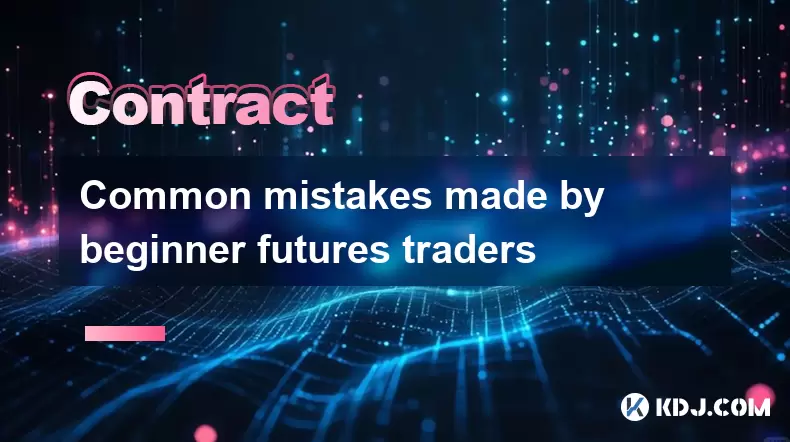-
 Bitcoin
Bitcoin $118,698.3676
0.16% -
 Ethereum
Ethereum $3,428.4877
5.97% -
 XRP
XRP $3.2496
9.52% -
 Tether USDt
Tether USDt $1.0002
0.00% -
 BNB
BNB $725.6930
4.36% -
 Solana
Solana $174.8923
4.52% -
 USDC
USDC $0.9997
-0.02% -
 Dogecoin
Dogecoin $0.2139
6.02% -
 TRON
TRON $0.3155
4.62% -
 Cardano
Cardano $0.8045
7.12% -
 Hyperliquid
Hyperliquid $46.6582
-1.72% -
 Stellar
Stellar $0.4676
0.80% -
 Sui
Sui $4.0143
0.38% -
 Chainlink
Chainlink $17.1546
2.97% -
 Hedera
Hedera $0.2458
3.27% -
 Bitcoin Cash
Bitcoin Cash $496.5967
-0.06% -
 Avalanche
Avalanche $22.8813
3.13% -
 Shiba Inu
Shiba Inu $0.0...01439
3.42% -
 UNUS SED LEO
UNUS SED LEO $8.8389
0.42% -
 Toncoin
Toncoin $3.2113
2.82% -
 Litecoin
Litecoin $101.2646
4.24% -
 Polkadot
Polkadot $4.2262
2.32% -
 Monero
Monero $340.4295
2.92% -
 Pepe
Pepe $0.0...01365
2.92% -
 Uniswap
Uniswap $8.9702
-2.78% -
 Bitget Token
Bitget Token $4.7675
2.00% -
 Dai
Dai $0.9998
-0.02% -
 Ethena USDe
Ethena USDe $1.0003
-0.04% -
 Aave
Aave $324.6394
-2.11% -
 Bittensor
Bittensor $433.6051
-0.88%
How to create a market neutral strategy with Bitcoin futures?
A market neutral strategy in Bitcoin futures balances long and short positions to profit from price discrepancies while minimizing directional risk through arbitrage opportunities across exchanges.
Jul 17, 2025 at 03:43 pm

Understanding Market Neutral Strategy in Cryptocurrency Trading
A market neutral strategy is a trading approach designed to profit from both rising and falling markets by balancing long and short positions. In the context of Bitcoin futures, this means taking offsetting positions that reduce exposure to the overall direction of the market. The goal is not to bet on price movement but to capture relative value or arbitrage opportunities while minimizing directional risk.
Traders often use this strategy to hedge against volatile price swings, especially in high-leverage environments like cryptocurrency futures markets. By maintaining balanced exposure, traders can aim for consistent returns regardless of whether Bitcoin's price goes up or down.
Selecting the Right Bitcoin Futures Contracts
To implement a market neutral strategy effectively, it's crucial to choose the right type of Bitcoin futures contracts. There are two main types: perpetual futures and quarterly futures. Perpetual contracts have no expiration date and track spot prices closely due to funding rates, while quarterly futures expire at a set date and may trade at a premium or discount to spot prices.
- Perpetual contracts are ideal for strategies requiring continuous exposure without rollover concerns.
- Quarterly contracts are useful for calendar spreads or term structure analysis.
Ensure that you're using platforms offering deep liquidity and transparent pricing, such as Binance, Bybit, or OKX. Also, verify the availability of tools like API access and margin settings that allow simultaneous long and short positions.
Building the Core Positions
The foundation of a market neutral strategy with Bitcoin futures involves taking offsetting positions. One common method is to go long on one exchange and short on another, or to take opposite positions in different contract types (e.g., perpetual vs. quarterly).
- Long position: Buy Bitcoin futures expecting the price to rise.
- Short position: Sell Bitcoin futures anticipating a decline in price.
These positions should be equal in dollar value to ensure that any directional movement cancels out. For example, if you buy $10,000 worth of Bitcoin perpetual futures on Exchange A, you should simultaneously sell $10,000 worth of Bitcoin futures on Exchange B. This creates a net-zero exposure to Bitcoin’s price fluctuations.
Leveraging Arbitrage Opportunities
One of the most popular applications of market neutral strategies in crypto is futures arbitrage, which exploits price discrepancies between exchanges or between spot and futures markets.
- If Bitcoin perpetual futures on Exchange A are trading at $62,000 and on Exchange B at $62,200, a trader can short the higher-priced contract and long the lower-priced one.
- When the prices converge, the trader exits both positions for a risk-free profit.
This requires fast execution, low fees, and sufficient capital across multiple platforms. It also demands monitoring of funding rates and interest rate differentials that might affect the profitability of holding positions over time.
Managing Risk and Slippage
Even though the market neutral strategy reduces directional risk, it introduces other risks such as execution risk, slippage, and counterparty risk. Effective risk management practices must be in place to protect capital.
- Set tight stop-losses on individual legs of the trade to prevent large losses if the market moves unexpectedly.
- Use limit orders instead of market orders to avoid slippage during volatile periods.
- Diversify across exchanges to mitigate the impact of platform-specific issues like downtime or withdrawal freezes.
Additionally, regularly assess your portfolio's net exposure and rebalance when necessary to maintain neutrality. Automated trading bots can help execute trades quickly and monitor deviations in real-time.
Optimizing Execution with APIs and Automation
For serious traders, integrating with exchange APIs is essential to automate trade execution and improve efficiency. APIs allow for real-time data retrieval, order placement, and position management.
- Connect to multiple exchanges via their public APIs using tools like Python or Node.js.
- Implement bot logic that identifies arbitrage opportunities and executes trades within milliseconds.
- Monitor balances and margins programmatically to avoid liquidation risks on either side of the trade.
Using platforms like Hummingbot or building custom scripts enables traders to scale their strategies and react faster than manual traders. Ensure that API keys are secured with limited permissions to prevent unauthorized access.
Frequently Asked Questions
Q: What is the minimum capital required to start a market neutral strategy with Bitcoin futures?
A: While there is no fixed minimum, traders typically need at least $5,000–$10,000 to effectively manage positions across multiple exchanges and absorb potential margin requirements and transaction costs.
Q: Can I use leverage in a market neutral strategy?
A: Yes, leverage can be used, but it must be applied carefully. Excessive leverage increases the risk of liquidation, especially if one side of the trade moves significantly against the other before convergence occurs.
Q: How do funding rates affect market neutral strategies in perpetual futures?
A: Funding rates are periodic payments exchanged between long and short perpetual futures traders. If you hold a net-neutral position across two exchanges, differing funding rates can erode profits or increase costs over time.
Q: Are market neutral strategies suitable for beginners?
A: These strategies require a solid understanding of futures markets, arbitrage mechanics, and risk management. Beginners should first gain experience with basic futures trading before attempting complex strategies like market neutrality.
Disclaimer:info@kdj.com
The information provided is not trading advice. kdj.com does not assume any responsibility for any investments made based on the information provided in this article. Cryptocurrencies are highly volatile and it is highly recommended that you invest with caution after thorough research!
If you believe that the content used on this website infringes your copyright, please contact us immediately (info@kdj.com) and we will delete it promptly.
- Winning Design: Nine-Year-Old's Art Becomes a Chocolate Coin!
- 2025-07-18 01:10:12
- Bitcoin, Market Cap & Strategy: Decoding the Crypto Game in 2025
- 2025-07-18 01:10:12
- Plume and Colb Finance: Tokenizing Pre-IPO Equities for the Blockchain Era
- 2025-07-18 00:35:12
- Bitcoin's Bull Run: Can It Break Through the Bearish Sentiment?
- 2025-07-18 00:35:12
- Silver Breaks 14-Year High: What's Driving the Rally?
- 2025-07-17 22:50:13
- Ozak AI, Stellar (XLM), and Solana (SOL): The New Crypto Watchlist Stars
- 2025-07-17 23:50:12
Related knowledge

What is a stablecoin-margined contract vs a coin-margined contract?
Jul 15,2025 at 06:36pm
Understanding the Difference Between Stablecoin-Margined Contracts and Coin-Margined ContractsIn the world of cryptocurrency derivatives, margin plays...

How to analyze volume profile for Bitcoin futures?
Jul 17,2025 at 01:21am
Understanding Volume Profile in Bitcoin Futures TradingVolume profile is a crucial analytical tool used by traders to assess the distribution of tradi...

How to backtest a Bitcoin futures trading strategy?
Jul 15,2025 at 11:35am
Understanding Bitcoin Futures TradingBitcoin futures trading involves contracts to buy or sell Bitcoin at a predetermined price and date in the future...

Common mistakes made by beginner futures traders
Jul 17,2025 at 07:49am
Overleveraging Without Understanding the RisksOne of the most frequent mistakes made by beginner futures traders is overleveraging their positions. Fu...

Psychology of trading Bitcoin contracts
Jul 13,2025 at 02:50am
Understanding the Emotional Rollercoaster of Bitcoin Futures TradingBitcoin contract trading, especially in the form of futures, introduces a high lev...

How to build a trading plan for Bitcoin futures?
Jul 17,2025 at 08:42am
Understanding Bitcoin Futures TradingBitcoin futures are derivative contracts that allow traders to speculate on the future price of Bitcoin without o...

What is a stablecoin-margined contract vs a coin-margined contract?
Jul 15,2025 at 06:36pm
Understanding the Difference Between Stablecoin-Margined Contracts and Coin-Margined ContractsIn the world of cryptocurrency derivatives, margin plays...

How to analyze volume profile for Bitcoin futures?
Jul 17,2025 at 01:21am
Understanding Volume Profile in Bitcoin Futures TradingVolume profile is a crucial analytical tool used by traders to assess the distribution of tradi...

How to backtest a Bitcoin futures trading strategy?
Jul 15,2025 at 11:35am
Understanding Bitcoin Futures TradingBitcoin futures trading involves contracts to buy or sell Bitcoin at a predetermined price and date in the future...

Common mistakes made by beginner futures traders
Jul 17,2025 at 07:49am
Overleveraging Without Understanding the RisksOne of the most frequent mistakes made by beginner futures traders is overleveraging their positions. Fu...

Psychology of trading Bitcoin contracts
Jul 13,2025 at 02:50am
Understanding the Emotional Rollercoaster of Bitcoin Futures TradingBitcoin contract trading, especially in the form of futures, introduces a high lev...

How to build a trading plan for Bitcoin futures?
Jul 17,2025 at 08:42am
Understanding Bitcoin Futures TradingBitcoin futures are derivative contracts that allow traders to speculate on the future price of Bitcoin without o...
See all articles

























































































